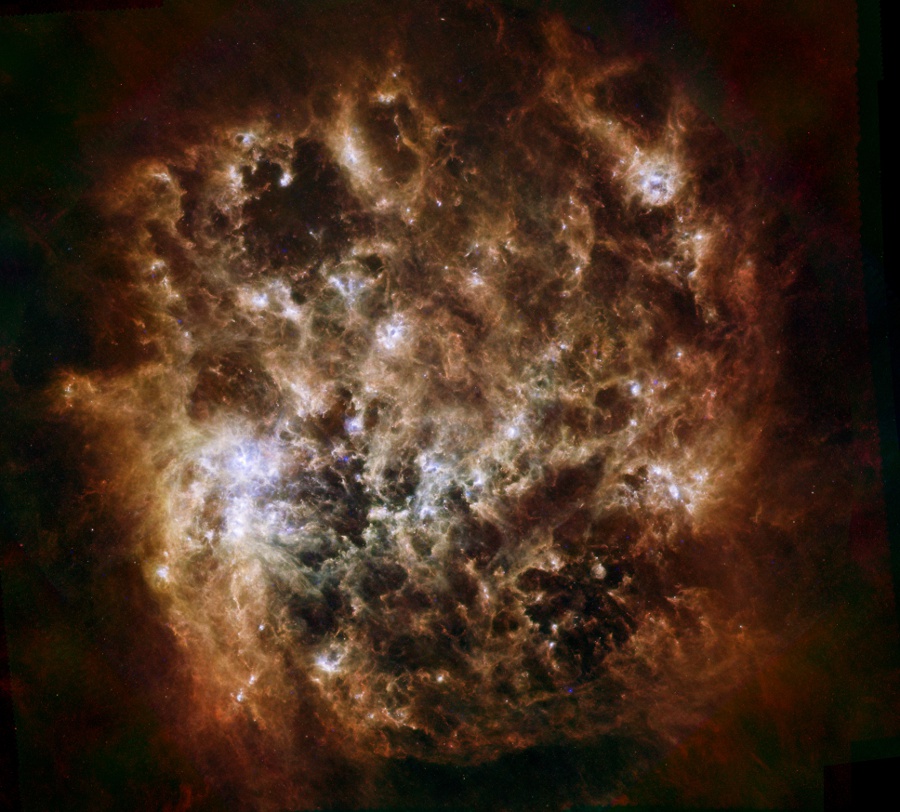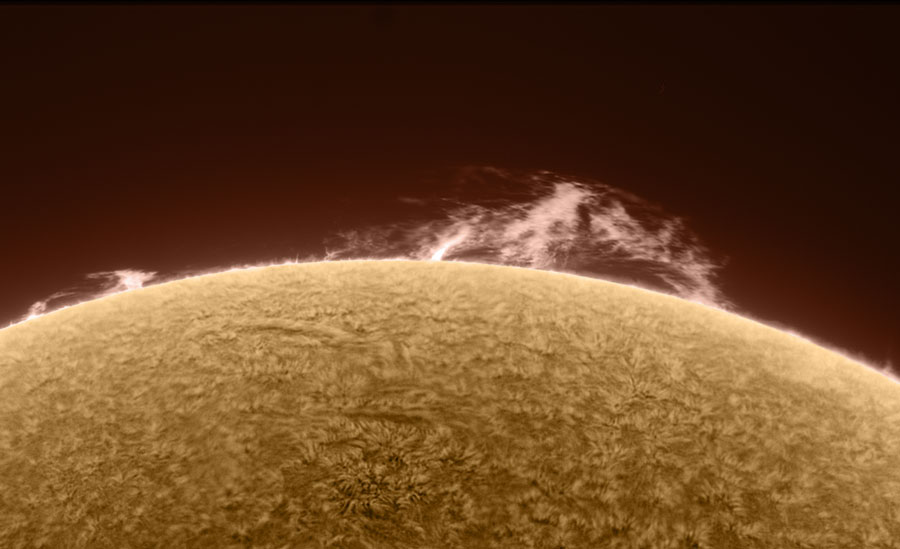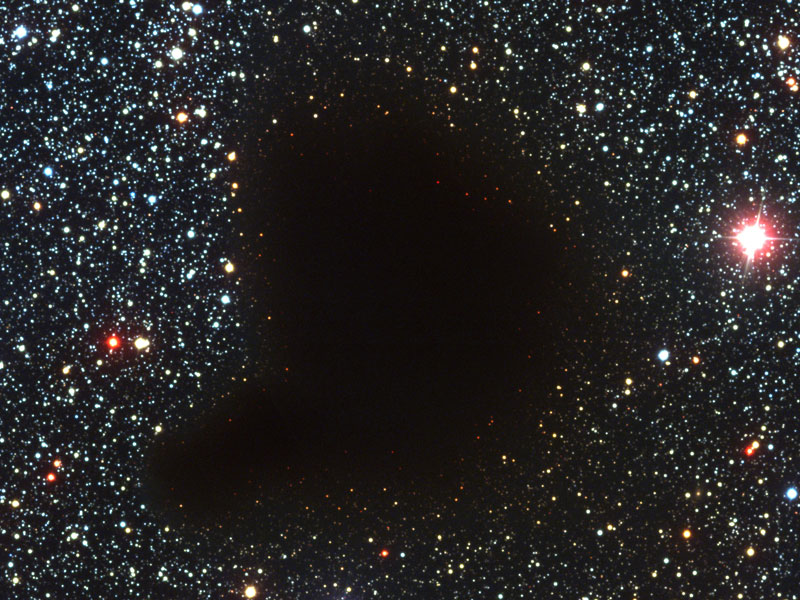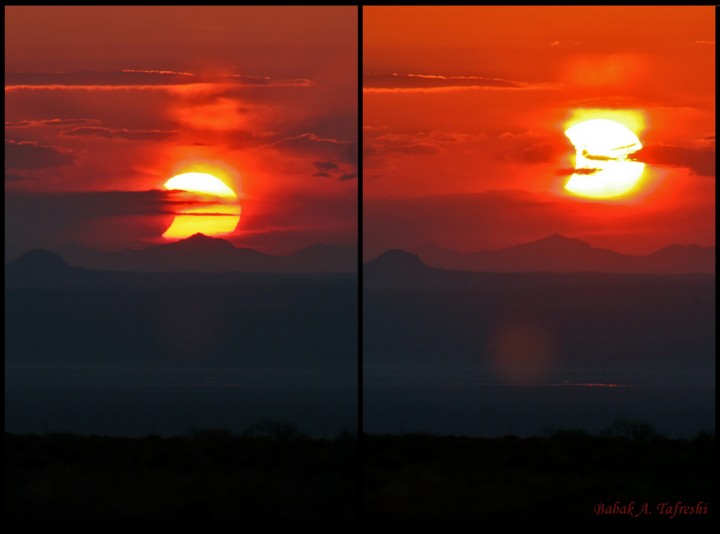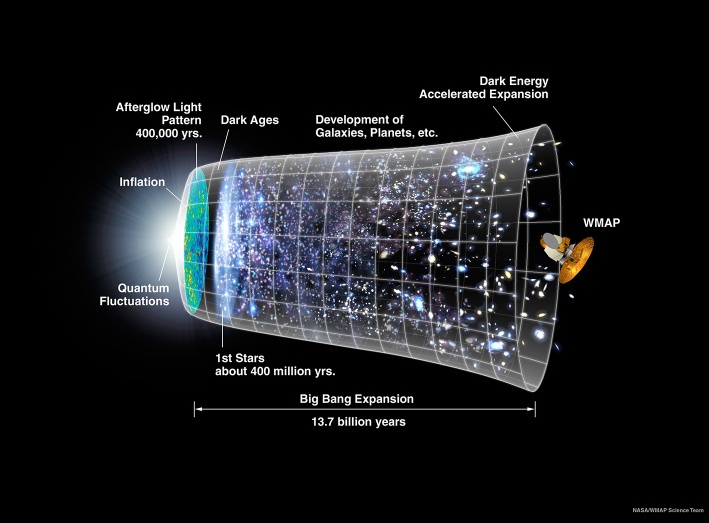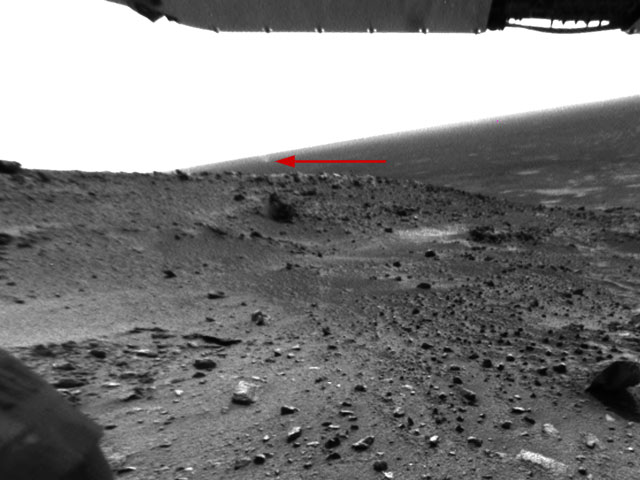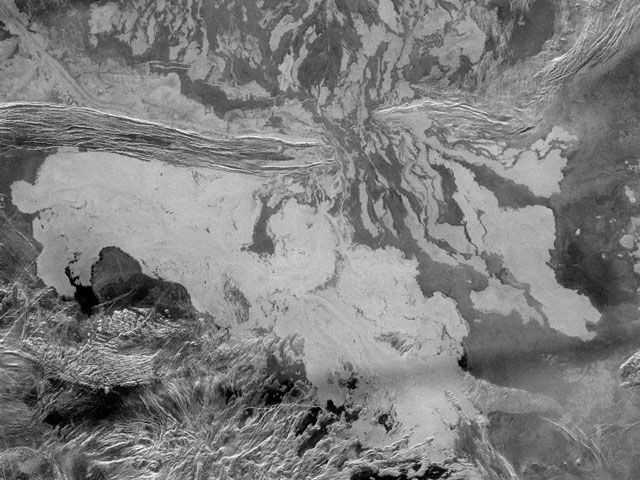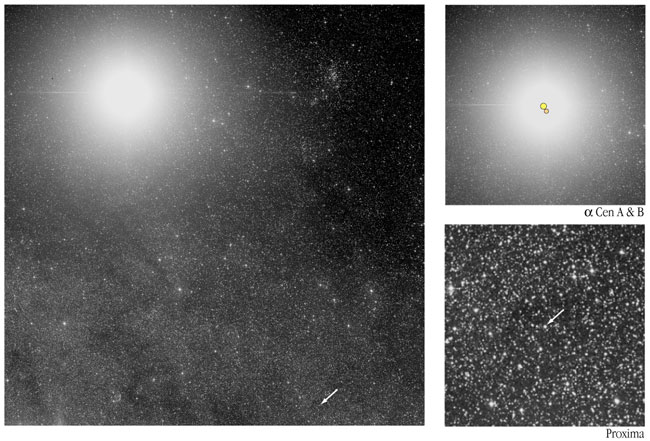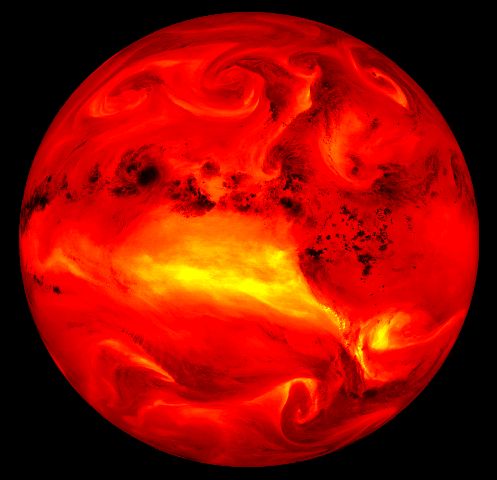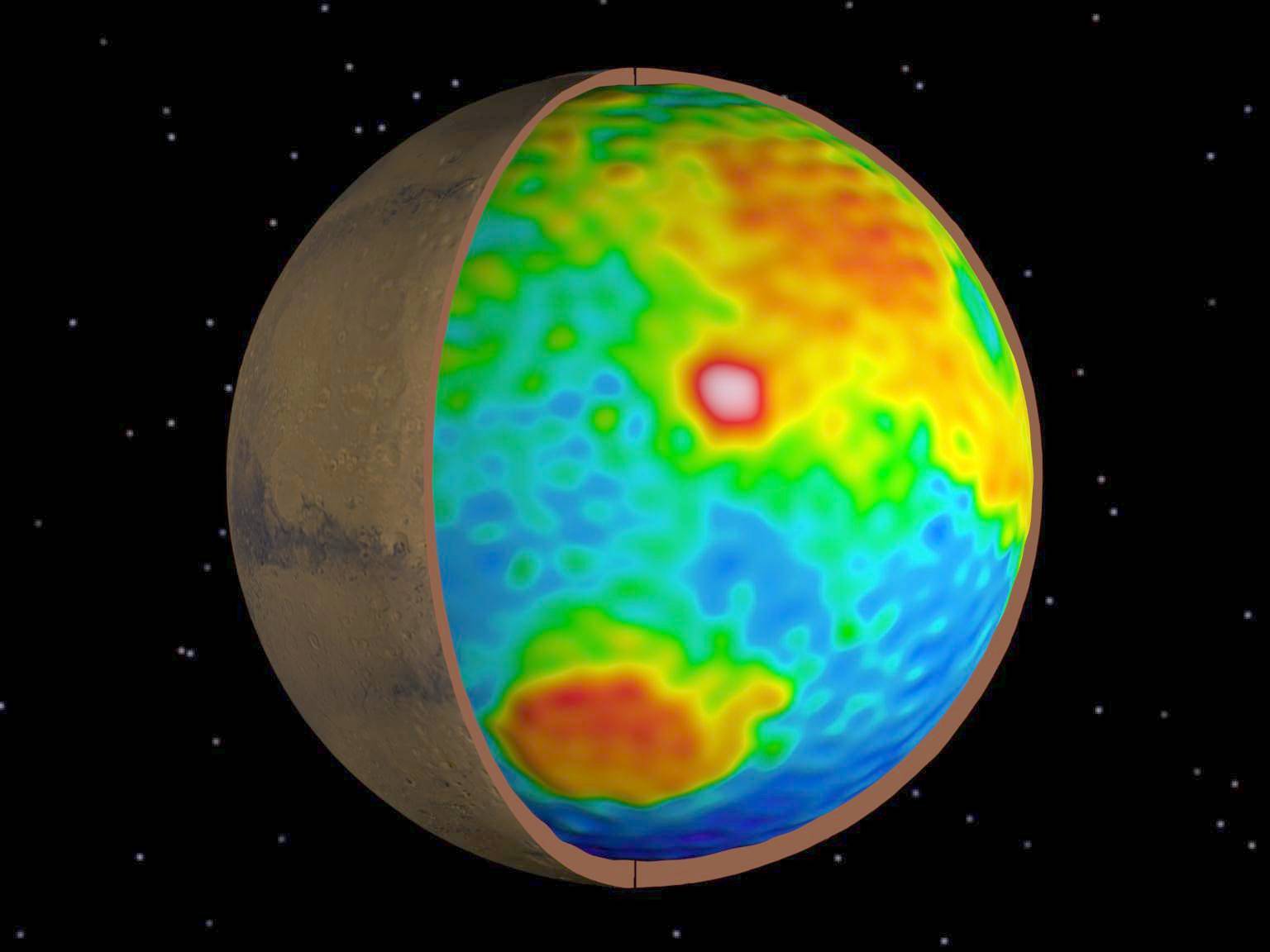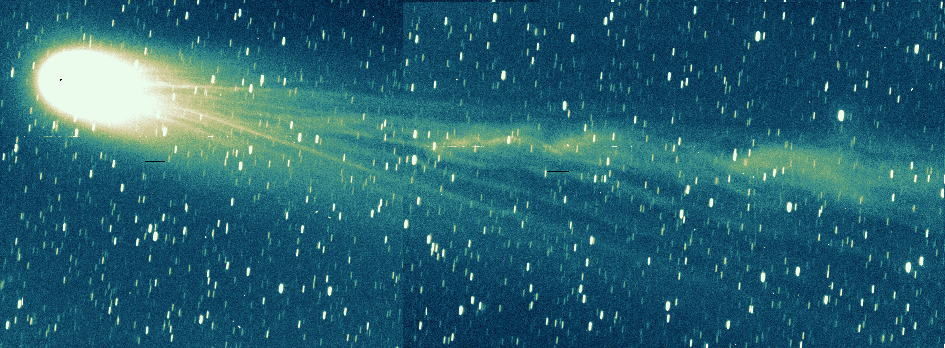| << Previous | Index | Next >> |
2015 Birds don't fly this high. Airplanes don't go this fast. The Statue of Liberty weighs less. No species other than human can even comprehend what is going on, nor could any human just a millennium ago. The launch of a rocket bound for space is an event that inspires awe and challenges description. Pictured above, an Atlas V rocket lifts off carrying NASA's Magnetospheric Multiscale Mission into Earth orbit 10 days ago to study the workings of the magnetosphere that surrounds and protects the Earth. From a standing start, the 300,000 kilogram rocket ship left to circle the Earth where the outside air is too thin to breathe. Rockets bound for space are now launched from somewhere on Earth about once a week.
2014 In the center of a swirling whirlpool of hot gas is likely a beast that has never been seen directly: a black hole. Studies of the bright light emitted by the swirling gas frequently indicate not only that a black hole is present, but also likely attributes. The gas surrounding GRO J1655-40, for example, has been found to display an unusual flickering at a rate of 450 times a second. Given a previous mass estimate for the central object of seven times the mass of our Sun, the rate of the fast flickering can be explained by a black hole that is rotating very rapidly. What physical mechanisms actually cause the flickering -- and a slower quasi-periodic oscillation (QPO) -- in accretion disks surrounding black holes and neutron stars remains a topic of much research.
2013 Cosmic dust clouds ripple across this infrared portrait of our Milky Way's satellite galaxy, the Large Magellanic Cloud. In fact, the remarkable composite image from the Herschel Space Observatory and the Spitzer Space Telescope show that dust clouds fill this neighboring dwarf galaxy, much like dust along the plane of the Milky Way itself. The dust temperatures tend to trace star forming activity. Spitzer data in blue hues indicate warm dust heated by young stars. Herschel's instruments contributed the image data shown in red and green, revealing dust emission from cooler and intermediate regions where star formation is just beginning or has stopped. Dominated by dust emission, the Large Magellanic Cloud's infrared appearance is different from views in optical images. But this galaxy's well-known Tarantula Nebula still stands out, easily seen here as the brightest region to the left of center. A mere 160,000 light-years distant, the Large Cloud of Magellan is about 30,000 light-years across.
2012 Renown 18th century astronomer Charles Messier described this 9th entry in his famous astronomical catalog as "Nebula, without star, in the right leg of Ophiuchus ...". But Messier 9 (M9) does have stars, known to modern astronomers as a globular cluster of over 300,000 stars within a diameter of about 90 light-years. It lies some 25,000 light-years distant, near the central bulge of our Milky Way galaxy. This Hubble Space Telescope close-up resolves the dense swarm of stars across the cluster's central 25 light-years. At least twice the age of the Sun and deficient in heavy elements, the cluster stars have colors corresponding to their temperatures, redder stars are cooler, bluer stars are hotter. Many of the cluster's cool red giant stars show a yellowish tint in the sharp Hubble view.
2011 What could cause a nebula to appear square? No one is quite sure. The hot star system known as MWC 922, however, appears to be embedded in a nebula with just such a shape. The above image combines infrared exposures from the Hale Telescope on Mt. Palomar in California, and the Keck-2 Telescope on Mauna Kea in Hawaii. A leading progenitor hypothesis for the square nebula is that the central star or stars somehow expelled cones of gas during a late developmental stage. For MWC 922, these cones happen to incorporate nearly right angles and be visible from the sides. Supporting evidence for the cone hypothesis includes radial spokes in the image that might run along the cone walls. Researchers speculate that the cones viewed from another angle would appear similar to the gigantic rings of supernova 1987A, possibly indicating that a star in MWC 922 might one day itself explode in a similar supernova.
2010 Dramatic prominences can sometimes be seen looming just beyond the edge of the sun. Such was the case last week as a giant prominence, visible above on the right, highlighted a Sun showing increased activity as it comes off an unusually quiet Solar Minimum. A changing carpet of hot gas is visible in the chromosphere of the Sun in the above image taken in a very specific color of light emitted by hydrogen. A solar prominence is a cloud of solar gas held just above the surface by the Sun's magnetic field. The Earth would easily fit below the prominence on the right. Although very hot, prominences typically appear dark when viewed against the Sun, since they are slightly cooler than the surface. A quiescent prominence typically lasts about a month, and may erupt in a Coronal Mass Ejection (CME) expelling hot gas into the Solar System. The next day, the same prominence looked slightly different.
2009 It may look like a grazing seahorse, but the dark object toward the image right is actually a pillar of smoky dust about 20 light years long. The curiously-shaped dust structure occurs in our neighboring Large Magellanic Cloud, in a star forming region very near the expansive Tarantula Nebula. The energetic nebula is creating a star cluster, NGC 2074, whose center is visible just off the top of the image in the direction of the neck of the seahorse. The representative color image was taken last year by the Hubble Space Telescope's Wide Field Planetary Camera 2 in honor of Hubble's 100,000th trip around the Earth. As young stars in the cluster form, their light and winds will slowly erode the dust pillars away over the next million years.
2008 Where did all the stars go? What used to be considered a hole in the sky is now known to astronomers as a dark molecular cloud. Here, a high concentration of dust and molecular gas absorb practically all the visible light emitted from background stars. The eerily dark surroundings help make the interiors of molecular clouds some of the coldest and most isolated places in the universe. One of the most notable of these dark absorption nebulae is a cloud toward the constellation Ophiuchus known as Barnard 68, pictured above. That no stars are visible in the center indicates that Barnard 68 is relatively nearby, with measurements placing it about 500 light-years away and half a light-year across. It is not known exactly how molecular clouds like Barnard 68 form, but it is known that these clouds are themselves likely places for new stars to form. It is possible to look right through the cloud in infrared light.
2007 Clouds covered the eastern horizon on Monday, when the Sun rose over the expansive Touran Wildlife Reserve in northeastern Iran. Of course, on that day the Moon rose with the Sun, creating a widely enjoyed partial solar eclipse. Along with a mountainous horizon, the cloud cover lent a dramatic aspect to this eclipse sunrise and made it possible for astronomer Babak Tafreshi to record these telephoto images without using a filter. Advancing north in planet Earth's sky, the Sun itself was also approaching the equinox, the astronomical marker for the first day of northern hemisphere spring and the beginning of Norouz, the Persian New Year.
2006 The Universe is expanding gradually now. But its initial expansion was almost impossibly rapid as it likely grew from quantum scale fluctuations in a trillionth of a second. In fact, this cosmological scenario, known as Inflation, is now reported to be further quantified by an analysis of three years of data from the WMAP spacecraft. WMAP's instruments detect the cosmic microwave background radiation - the afterglow light from the early Universe. WMAP's amazing success in exploring the first trillionth of a second and favoring specific inflationary scenarios lies in its ability to make unprecedented, precise measurements of the properties of the microwave background. The subtle properties are distilled from conditions in the early Universe and related to its first moments of existence. Schematically, this diagram traces the 13.7 billion year (plus a trillionth of a second ...) history of the Universe from the quantum scale to the formation of stars, galaxies, planets, and WMAP.
2005 What is that wisp on the horizon? Scientists think that the slight white apparition is actually a Martian dust devil that was caught swirling across Mars. The above image was taken earlier this month by the robotic rover Spirit. The swirling cloud was found by comparing the above image to a previous image of the same area. Fresh dust devil tracks have been seen on Mars before, but actually seeing one up close was a surprise. The most similar phenomena to Martian dust devils on Earth are terrestrial dust devils, tornadoes and waterspouts. The ultimate cause of Martian dust devils remains unknown, but might be related to rising air heated by sun-warmed rocks and soil. Just the previous day, Spirit's power acquisition increased unexpectedly, possibly the result of a dust devil passing near or over the Spirit rover and effectively cleaning its solar panels.
2004 The hot surface of Venus shows clear signs of ancient lava flows. Evidence of this was bolstered by the robot spacecraft Magellan, which orbited Venus in the early 1990s. Using imaging radar, Magellan was able to peer beneath the thick perpetual clouds that cover Earth's closest planetary neighbor. Picture above, lava apparently flowed down from the top of the image and pooled in the light colored areas visible across the image middle and bottom. The lava cut a channel across the darker ridge that runs horizontally across the image center. The picture covers about 500 kilometers across. The lava originates from a caldera named Ammavaru that lies about 300 kilometers off the image top. The hot dense climate makes Venus a more difficult planet on which to land spacecraft and rovers. Venus currently sparkles as the brightest object in the western sky after sunset.
2003 The closest star system to the Sun is the Alpha Centauri system. Of the three stars in the system, the dimmest -- called Proxima Centauri -- is actually the nearest star. The bright stars Alpha Centauri A and B form a close binary as they are separated by only 23 times the Earth- Sun distance - slightly greater than the distance between Uranus and the Sun. In the above picture, the brightness of the stars overwhelm the photograph causing an illusion of great size, even though the stars are really just small points of light. The Alpha Centauri system is not visible in much of the northern hemisphere. Alpha Centauri A, also known as Rigil Kentaurus, is the brightest star in the constellation of Centaurus and is the fourth brightest star in the night sky. Sirius is the brightest even thought it is more than twice as far away. By an exciting coincidence, Alpha Centauri A is the same type of star as our Sun, causing many to speculate that it might contain planets that harbor life.
2002 What alien planet's bizarre landscape lurks below these fiery-looking clouds? It's only planet Earth, of course ... as seen on the Water Vapor Channel. Hourly, images like this one (an infrared image shown in false-color) are brought to you by the orbiting Geostationary Operational Environmental Satellites' (GOES) multi-channel imagers. These instruments can produce images at the infrared wavelength of 6.7 microns or about 10 times the wavelength of visible light, recording radiation absorbed by water vapor in the upper troposphere. In this picture, the planet's dark regions correspond to high concentrations of water vapor over storms and high cloud tops, while bright areas are relatively dry. The dominant bright feature seen here is a persistent region of dry descending air extending west into the Pacific off the Peruvian coast. Atmospheric water vapor is otherwise invisible to the eye and produced by evaporation from the oceans.
2001 Streaking low across the western horizon after sunset, the Russian Mir space station makes a final pass through the evening sky above the coastal city of Salvador, Brazil. In this 5 minute 20 second time exposure made with ASA 800 film and a wide-angle lens on March 19, setting stars leave short, almost vertical trails. A rapidly moving Mir travels horizontally, trailing toward the left (south) edge of the picture. Reflecting sunlight from low Earth orbit, the historic space station chanced to produce a "farewell" flare near the end of its visible track. As if in poignant response, the Hubble Space Telescope appeared in Brazilian skies within a minute after Mir's passage and also left a flare along a trail moving toward the top of the picture. Lights visible on the horizon are from nearby Itaparica Island. After 15 years in service, the long-lived Mir space station was safely deorbited today. The splashdown of its surviving pieces occurred in a remote area of the South Pacific Ocean.
2000 What's inside Mars? From orbit, the Mars Global Surveyor (MGS) spacecraft has recorded detailed images of the red planet since July 1997. Still, its cameras can not look beneath the surface. But minute changes in the spacecraft's orbital velocity are produced by variations in the planet's gravitational field, and these changes are related to interior density fluctuations. When the subtle orbital changes were measured using MGS radio science experiments and combined with the accurate Mars Orbiter Laser Altimeter topographical data, researchers were able to produce a map of the thickness of the martian crust. In this color cut-away diagram of the results, red colors correspond to thin and blue to thick areas of the crust which rides above the martian mantle. From the global map, the crust is seen to range from about 20 to 50 miles thick and shows a dramatic difference between the generally thinner northern hemisphere to thicker southern hemisphere crust. For the newly formed planet, the thin crust would have promoted rapid cooling and may have given rise to a large northern ocean on early Mars.
1999 A photogenic group of nebulae can be found in Chamaeleon, a constellation visible predominantly in skies south of the Earth's equator. Towards Chamaeleon, dark molecular clouds and bright planetary nebula NGC 3195 can be found. Visible near the center of the above photograph is a reflection nebula surrounding a young bright star. On the lower right, a dark molecular cloud blocks the light from stars behind it. It takes light hundreds of years to reach us from these objects.
1998 The center of galaxy NGC 1808 is bursting with new stars, but why? Being a barred spiral galaxy makes NGC 1808 somewhat similar to our own Milky Way Galaxy. But the disk of NGC 1808 (inset) is quite warped, and its center is unusually bright and blue. The above picture of NGC 1808's center, in representative color, was recently taken by the Hubble Space Telescope and released yesterday. Perhaps gravitational pull from a recent pass of neighboring galaxy NGC 1792 has caused matter to move inward along NGC 1808's bar, triggering the burst of star formation. Also prominent are blue clusters of stars and filaments of dark dust obscuring even more activity.
1997 Comet Shoemaker-Levy 9, named after its co-discoverers, was often referred to as the "string of pearls" comet. It is famous for its unusual appearance as well as its collision with the planet Jupiter! The comet's original single nucleus was torn to pieces by Jupiter's strong gravity during a close encounter with the solar system's largest planet in 1992. The pieces are seen in this composite of Hubble Space Telescope images to be "pearls" strung out along the comet's orbital path. In July of 1994 these pieces collided with Jupiter in a rare and spectacular series of events.
1996 The above false-color picture of Comet Hyakutake taken just two days ago shows its rapidly developing tail. The comet now has a substantial coma with a bright center, lending it a dramatic eye-like appearance. This is not Comet Hyakutake's first visit to the inner Solar System. Recent orbital determinations clearly show Comet Hyakutake's was here before, although the previous approach is estimated to be about 8600 years ago - during the epoch of the first recorded human cities. Were this the comet's first trip to the inner Solar System, it probably would not appear as bright as it does now - first time comets typically do not shed as much luminous gas as veterans. Before making any approach to the inner Solar System, Comet Hyakutake was dormant in the Oort cloud of the outer Solar System for a few billion years, along with hundreds of thousands of similar comets. Comet Hyakutake is predicted to become the brightest comet since Comet West in 1976, which rivaled the brightest stars in the sky. Tonight, Comet Hyakutake can be seen best from about 10 pm near the Big Dipper's handle.
| << Previous | Index | Next >> |


